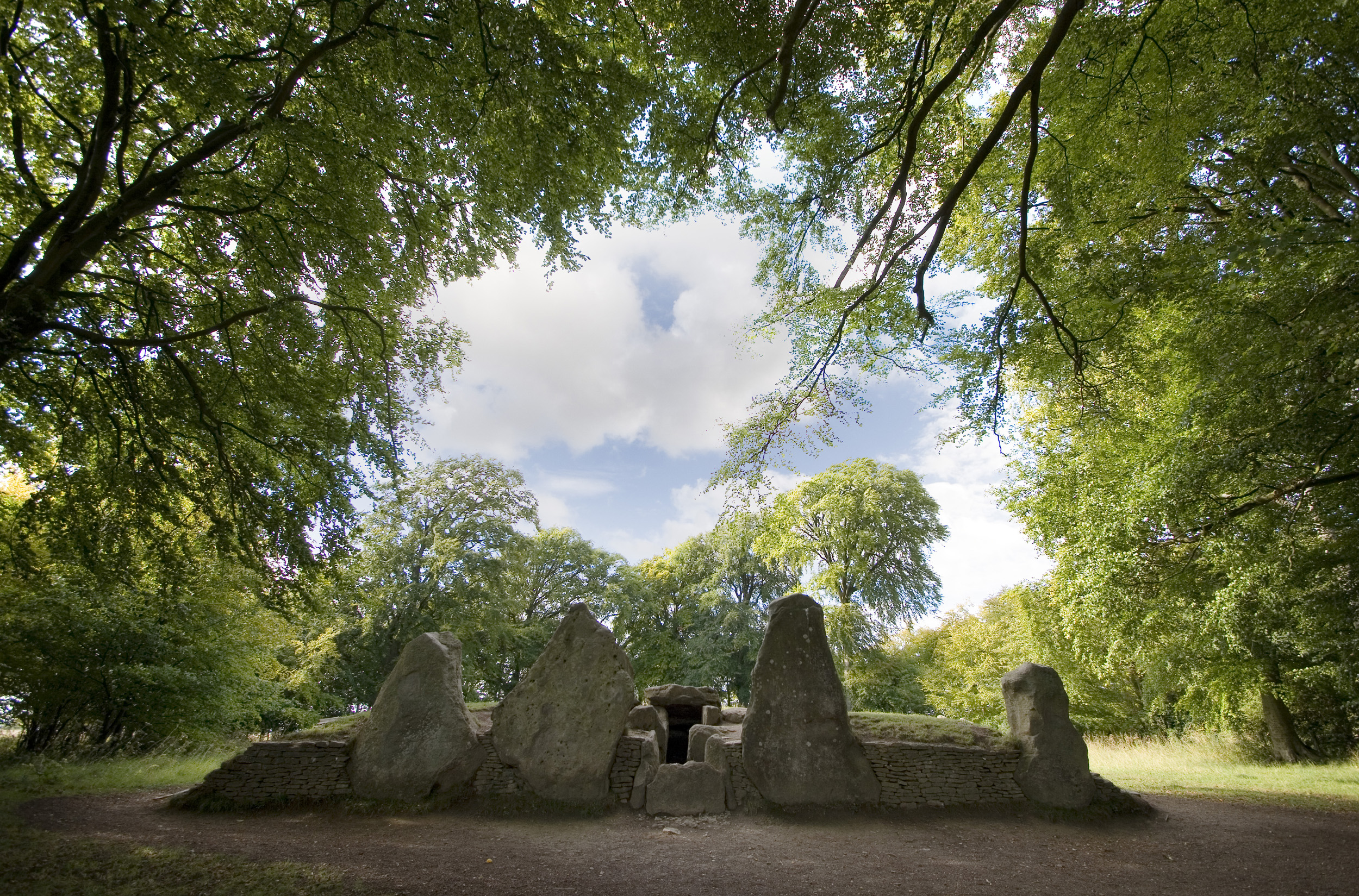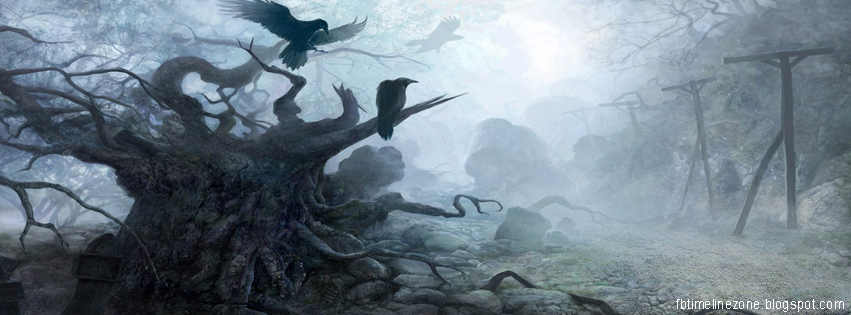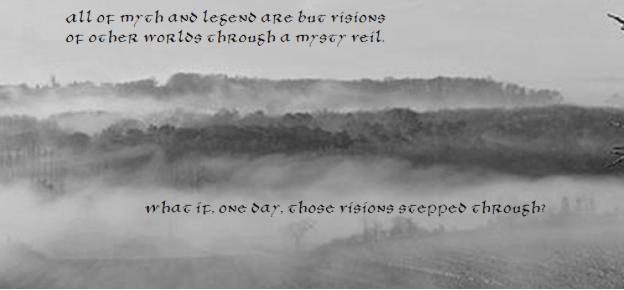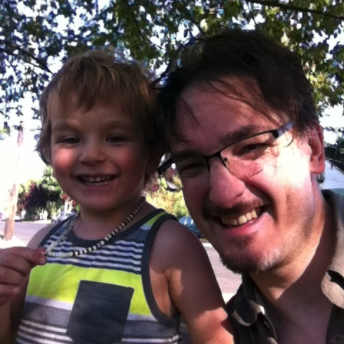Today, author Sean Gallagher returns to talk about Magic! What is important when writing about magic in your world? Read on to find out what he did to create a believable magic system for his. To read more by Sean Gallagher, go HERE.

What is magic?
The people of Anglo Saxon England would have told you all about magic. They had a very clear vision of what it was. They believed in all kinds. To them it was called galdra.
Though the country had been thoroughly Christian for two hundred years by the beginning of the 11th century, old pagan beliefs were hard to let go of. The priests and kings tried to purge it entirely. In the Laws of Ælfred there were very stiff penalties for those thought to be practicing the old religions. They continued to excoriate old beliefs well into the late 11th century. They railed against the curses, potions and enchantments of wicca (witches) and wiglear (wizards). There is evidence of sermons that spoke against morthwyrtha (worshippers of the dead) and their ligwiglunga (incantations of the dead).

Hwata (Omens) were a part of everyday life. People really paid attention to whether there was a raven that flew over your house going south on a full moon night, and such other ‘signs’. An aspect of Anglo-Saxon cosmology, related to omens and still debated today, was wyrd (fate). The Norns (three wizened women) wove your life tapestry and your wyrd (fate) was pre-determined.
Many common maladies were blamed on ‘elf-shot’. Tiny elves, called Ælfr, shot you with their tiny bows and made you sick. Families would put out a bowl of the morning’s fresh milk, or a pot of beer as a gift to keep the fairies happy. It was a common belief that household fairies existed well into the 16th century. Shakespeare would take much of the folklore to create Puck. Elves took many different forms, from the tiny ones who shot you to make you sick, to bigger ones who could perform magical housework, such as shoe repair, if you kept them happy.
They believed in many kinds of magical creatures. Elves (Ælfr) have already been mentioned. We can add all of the commonly understood fantasy creatures to the list that your every day Anglo-Saxon would know. Dwarves were called dweorg. Faires had the more sinister name démon or áglæca. Orc, a familiar word for anyone who has read Tolkien, is the actual Old English word used to describe a demon. The oldest and longest surviving long form poem in Old English, Beowulf, tells of the monsters Grendel, Grendel’s mother, and an unnamed draca (dragon). Grendel is referred to as a sceadugenga (night walker) but is described as a giant, which are called ent, eoten, and þyrs (pronounced thriss) Grendel’s mother is never named or described very well but she has monstrous or magical powers that enable her to fight the great warrior Beowulf to a standstill, on the verge of defeating him, until he finds a sword, in her own lair, to cut her head off with.

My story, Mysts of Mythos, is set in the early eleventh century, and is about our medieval world suddenly faced with real monsters and magic from out of our mythology. I get to mine the old Anglo Saxon myths for all kinds of familiar magic and monsters and use them in my story. Curses, and potions will all appear on the page, as well as magic swords, and other enchanted items.
I also wanted to use some modern concepts of magic as well. For example much of the magic in the World of Mysts is influenced by ley lines. Ley lines are a theory created in 1921 by a British man, Alfred Watkins. The concept is based on the idea that various ancient features such as standing stones, causeways, and hill forts, etc., were placed in alignment with each other along lines of energy. The concept has met a lot of criticism from archaeologists and statisticians who point out that alignments can be very easy to create with random points, much less constructed elements of civilization constrained by natural features. But I think the idea is fun so I’m using it as the backbone of the magic system in the World of Mysts. They won’t end up being called ley lines, but the basic idea will be there. Lines of energy flow across the landscape. When they intersect they create a nexus point where mystical energy gathers and flows more freely making it available to users of that energy. Eventually these nexus points will be discovered and taken advantage of.
Another backbone of the influence of magic in the World of Mysts is related to my love of comic books. I grew up reading Marvel comics and was always a big fan of Wolverine, Colossus and Nightcrawler. Anyway, I like the idea that when your body is going through an already traumatic change (puberty) is when it is most open to, and most able to handle, the sudden awakening of mystic powers. When the Day of Mysts arrives, anyone who is already an adult is biologically, physiologically, and mystically set in proverbial stone. But anyone who is going through puberty is open to the influence of the magic energies that came with the Mysts.
Just at a rough calculation I thought it would be reasonable to say that one in every hundred people has some mystic potential, but that for most of those it had to be triggered somehow, perhaps by a traumatic event or coming in range of a ley line. One in every thousand people has some minor form of ability that could be better nightvision, heightened senses, or a sensitivity to magic, or any other thing I might imagine up along the way. Not a huge advantage, but special. The next level gets interesting. One in every ten thousand has a significant ability or power. This is where you will see people with heightened reflexes that will make them formidable in combat, or minor spellcasters/enchanters etc., or extra strong perhaps able to lift twice as much as the strongest normal human, or extra tough, etc. The spellcasters, due to the fact that their ability revolves around directly manipulating magical energies, will be able to increase their strength through practice and eventually become much more powerful than those whose ability is purely physical. On the other hand it will take a lot of work to get there.
The fourth rank of mystic ability is where things start to get really scary. One in every hundred-thousand have a power that is more instinctual. These people just harness their power more naturally and have much higher levels of power right away. At this level we are talking about a man who is so strong that he can lift up to ten times what the strongest normal human is capable of, etc.
The fifth and final rank occur one in every million. These will have truly astonishing levels of power. Real super hero level stuff.
To put this in perspective. It is estimated that the entire population of England in the days of the Domesday book (1086 CE) was about two million. Almost one hundred years earlier, when Mysts of Mythos is set, it might have been as little and a million and a half. This means that there probably isn’t a fifth rank human on the entire island because only the teenagers are getting these abilities that begin to spring up. That’s possibly as much as a third of the population, meaning that there are only a half million people in the pool of folk with access to these new powers. So that gives us about five thousand people with magical potential. Five hundred people with some minor ability that surfaces no matter what. Fifty people who have some real significant power, and five people who have pretty scary levels of power.
Those previously mentioned numbers won’t include the new monsters and other folk who are brought here through the influence of the Myst.
Now we have a mostly uneducated medieval population suddenly faced with people who really do perform miracles right before their eyes. What happens now? Adoration? Fear? Jealousy? Who knows? Me. That’s what the story is going to be about. Look for Mysts of Mythos books by Sean Gallagher to come to Amazon later this year.
###

Sean Gallagher is the author of the upcoming novel, Mysts of Mythos, first book in a new series of historical fantasy. Raised in Syracuse, NY he moved to Oregon while still in high school and currently resides in Portland with his wife, Monica, and son, Rune. The Gallaghers are also the proud human friends of Blanca the dog and Thor the cat.
Check out his website or join his mailing list for further updates:
‘Like’ his page on FaceBook
Follow him on:
Twitter: @Faolan
Instagram: @MystsOfMythos


Intriguing. I’m interested in seeing how this approach to magic plays out in the series.
Pingback: How to do a developmental edit yourself — a self-editing guide for writers | John Robins Blog
Pingback: Epic Fantasy Writer – Mysts Of Mythos by Sean Gallagher